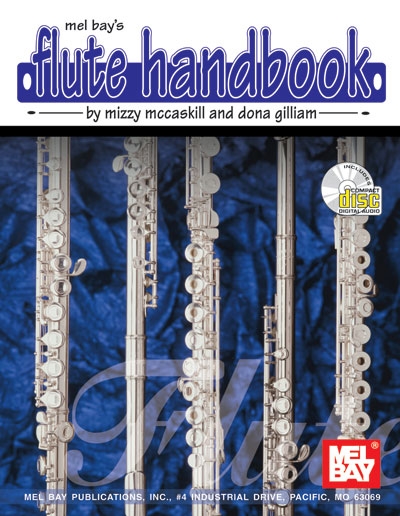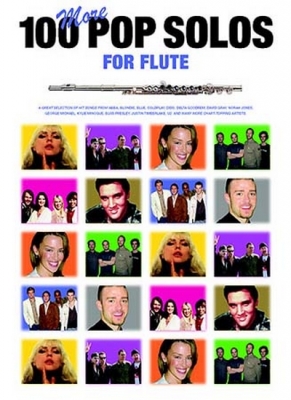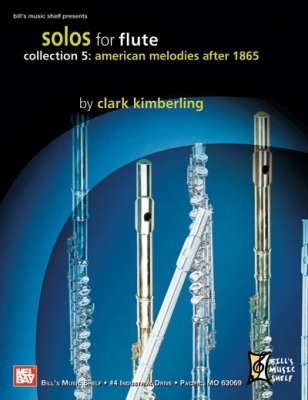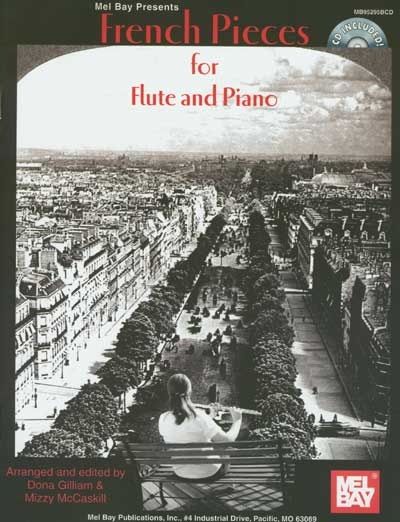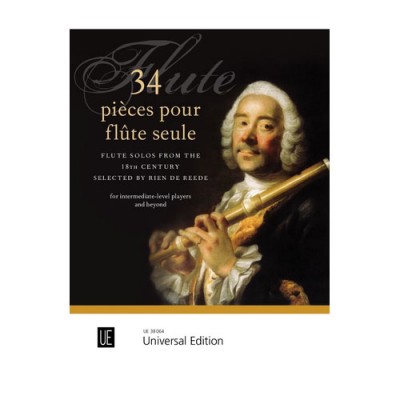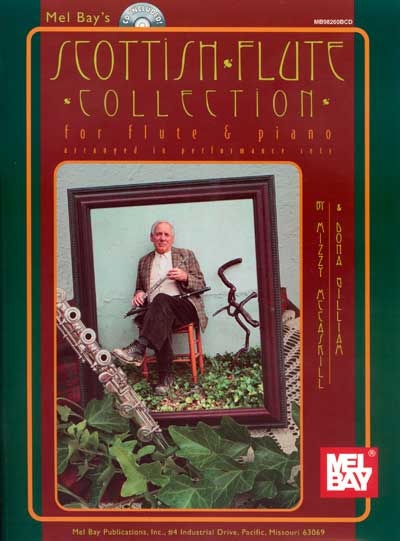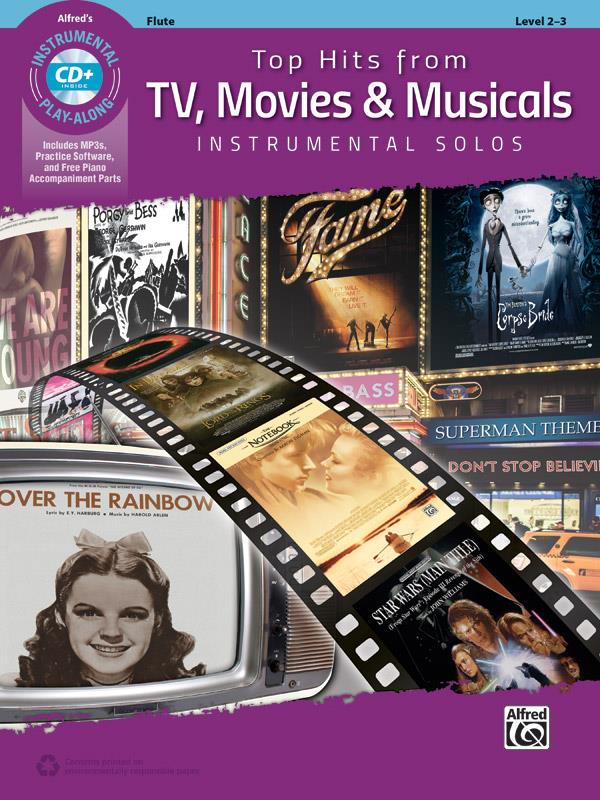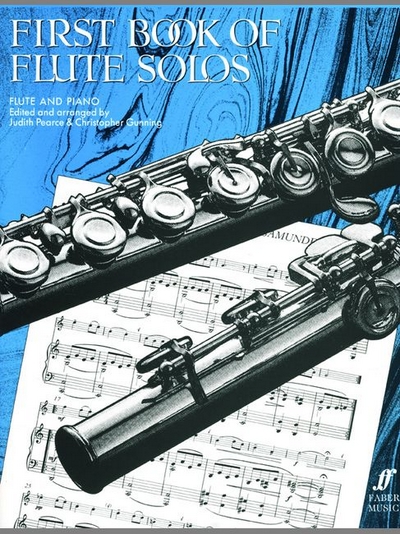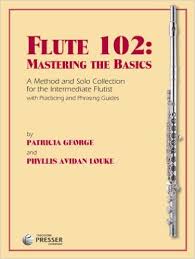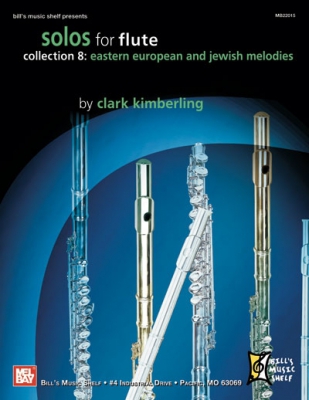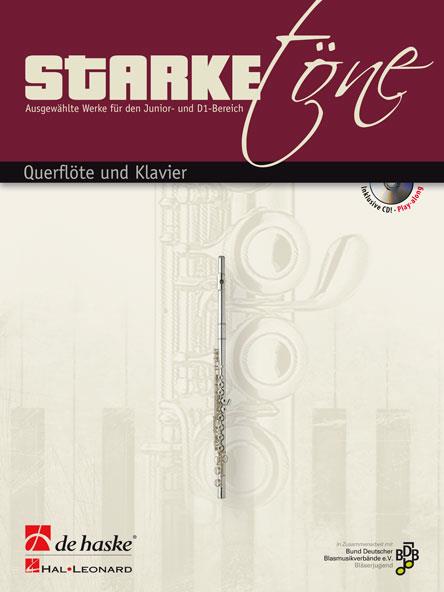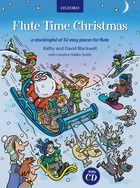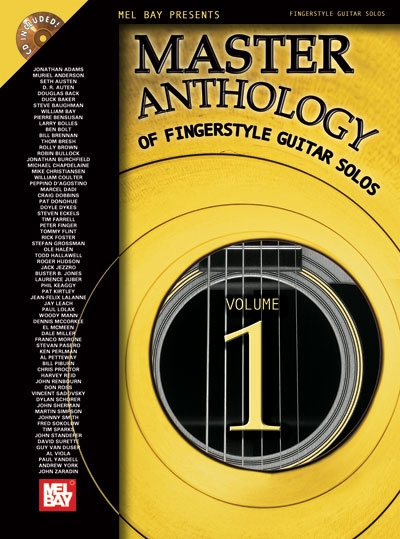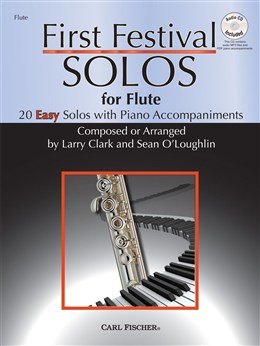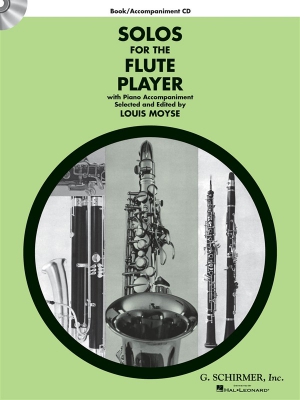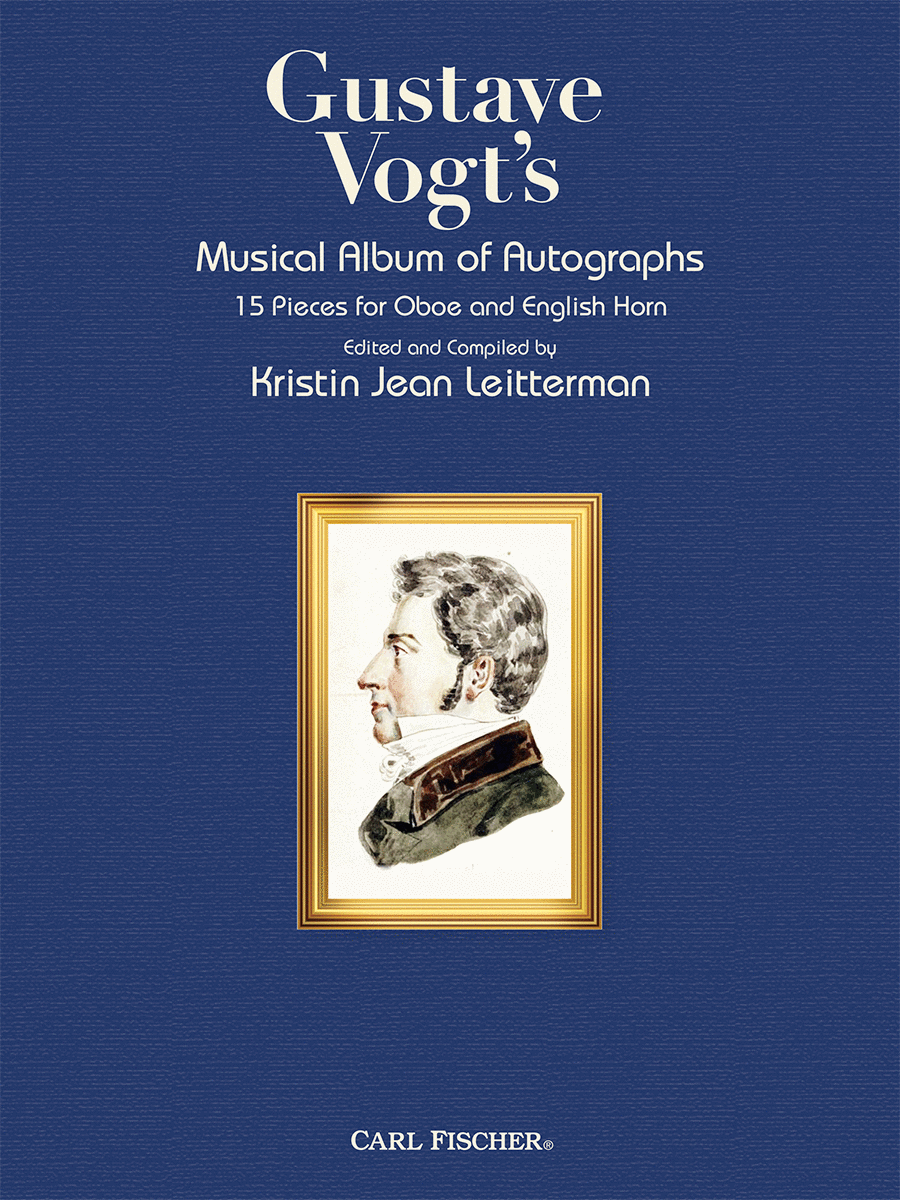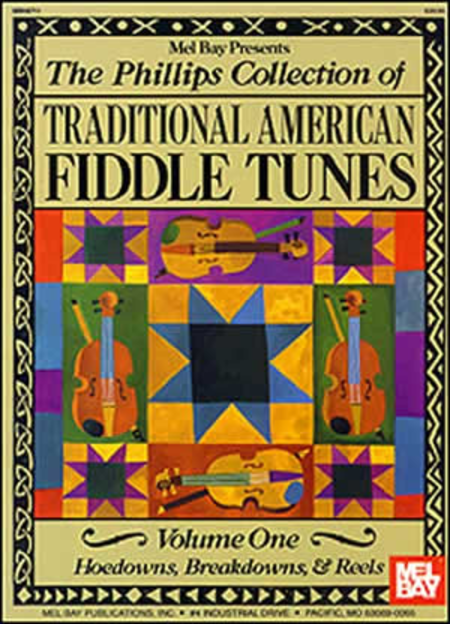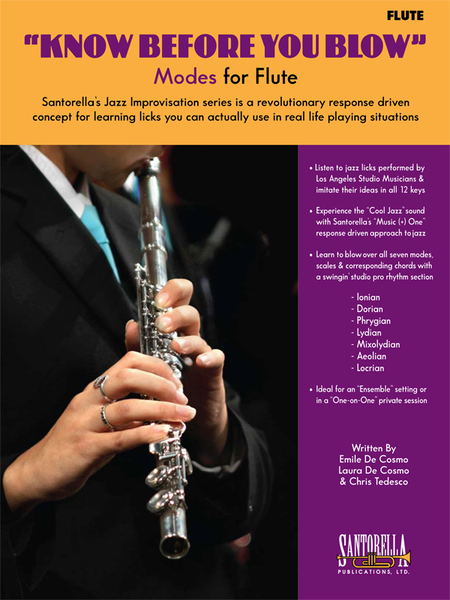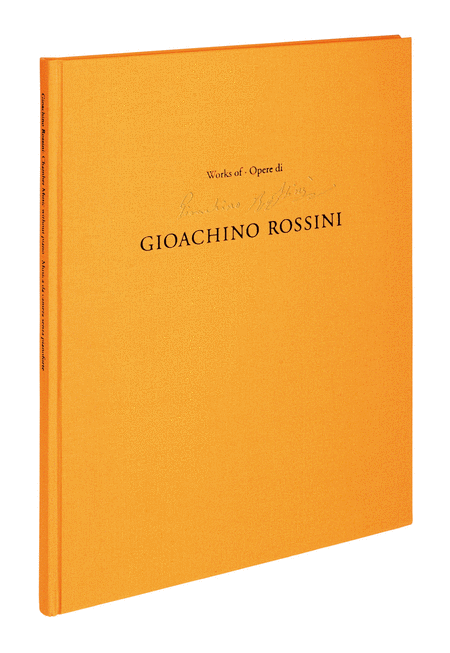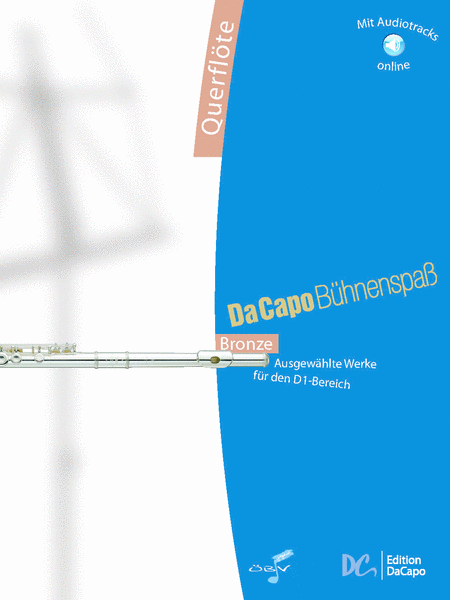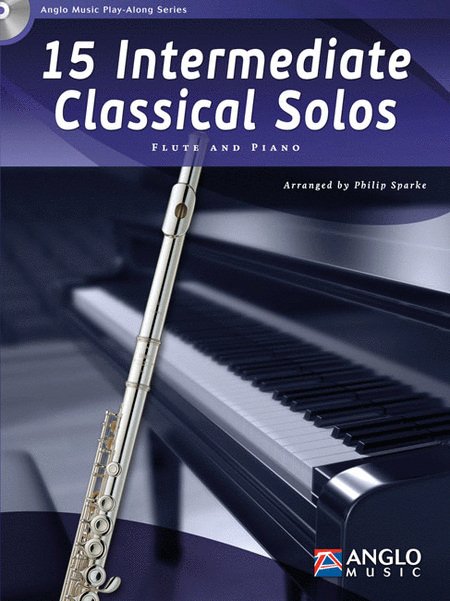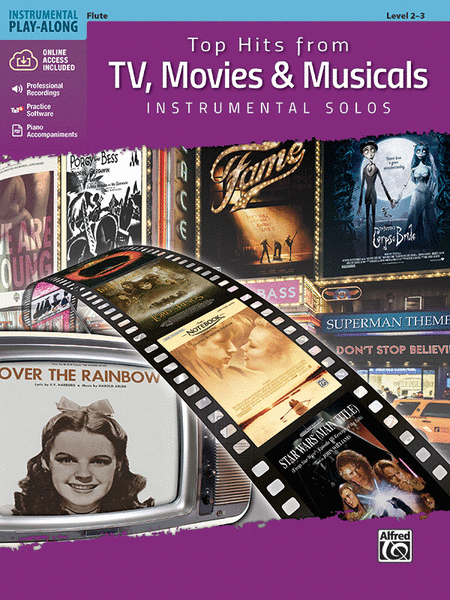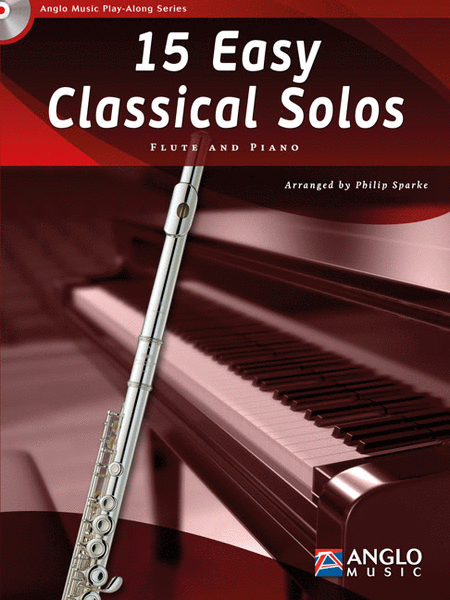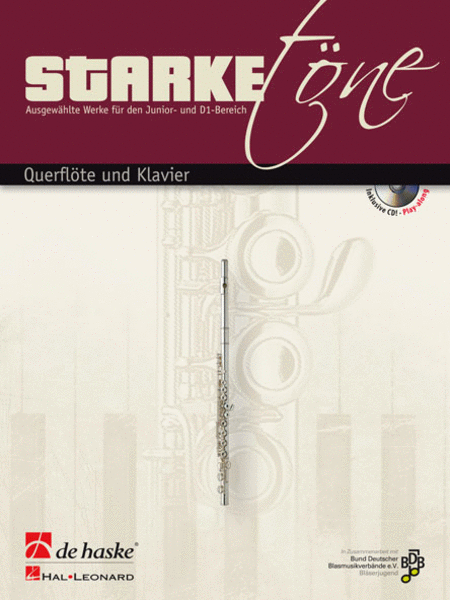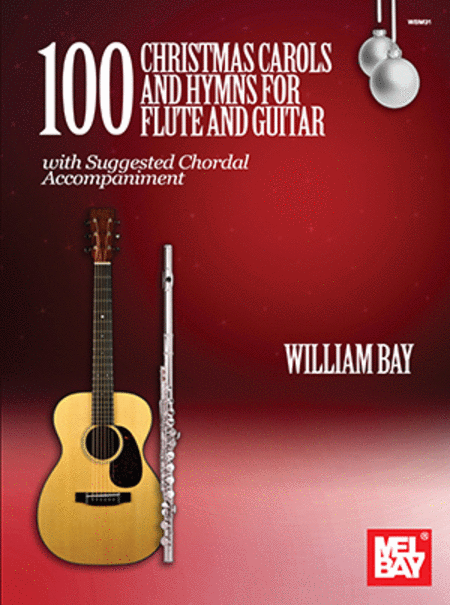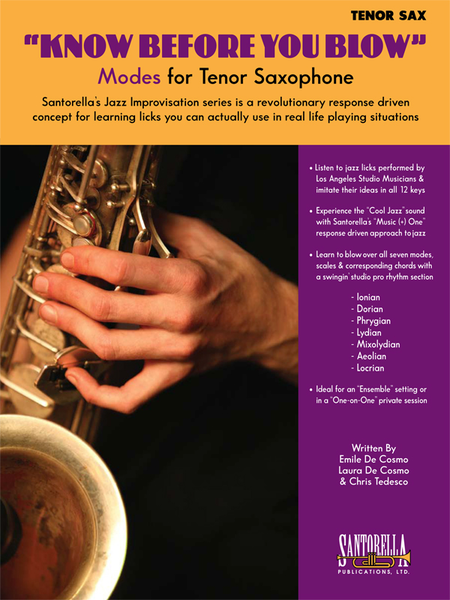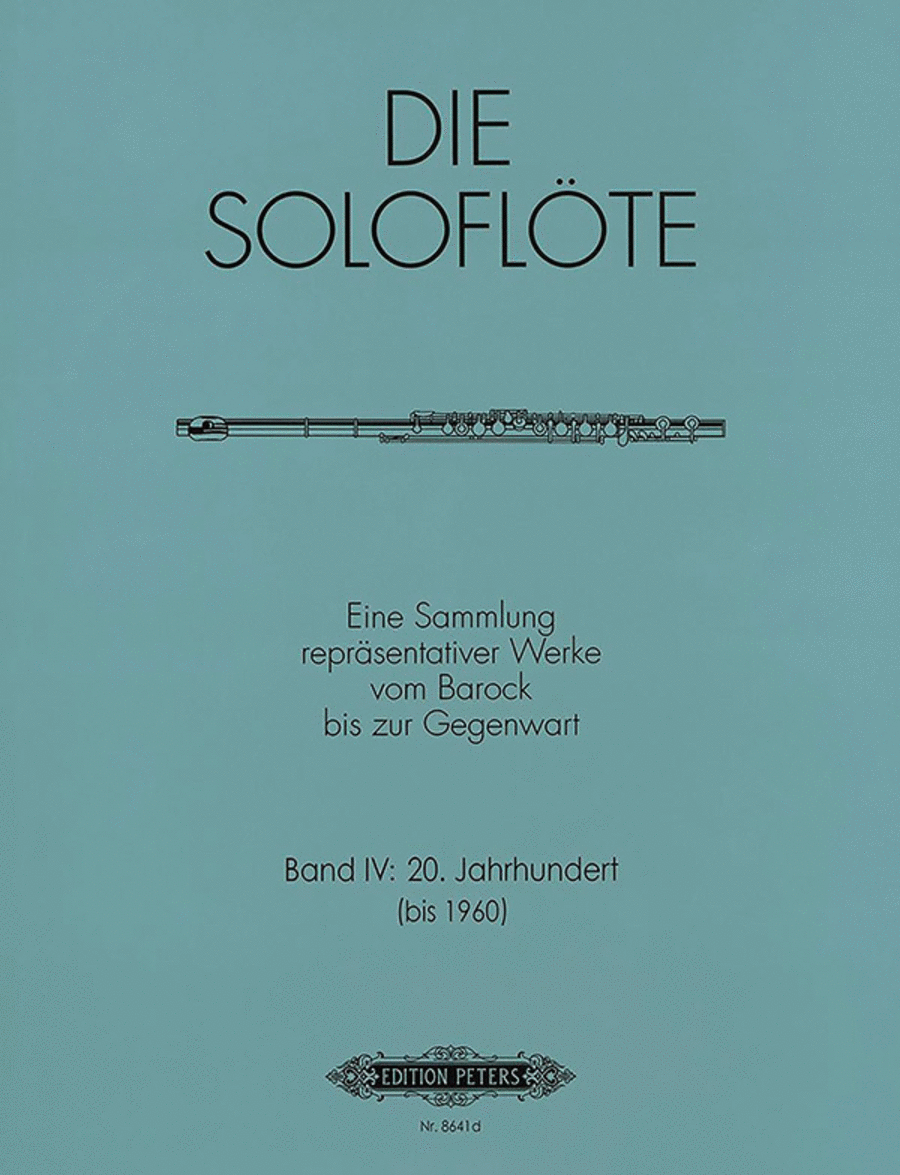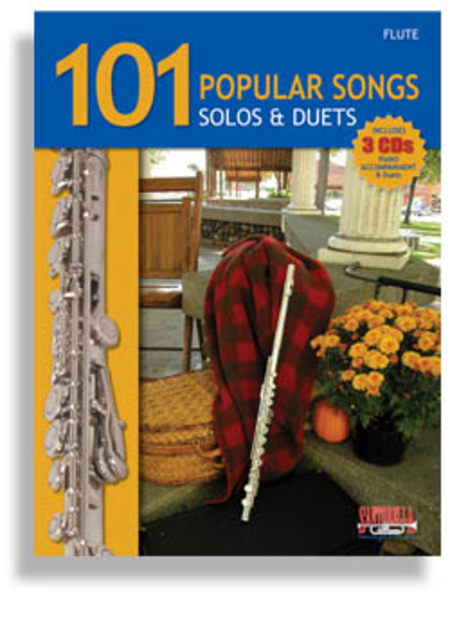|
| Flûte Handbook (MC
CASKILL MIZZY)
Flûte traversière - Intermédiaire
Mel Bay
Par MC CASKILL MIZZY. Un texte très pratique rempli de notes sur faire chauffer...(+)
Par MC CASKILL MIZZY. Un texte très pratique rempli de notes sur faire chauffer l'embouchure, position de la main et le soutien de l'haleine, quotidien moteur, majeur et mineur échelles et arpèges, etudes d'octave inférieures, etudes contemporaines et un trille et note doigté graphique ! Le format facile à utiliser en fait un excellent compagnon au tout début de la méthode intermédiaire. Le CD inclus est un moyen idéal pour le pays en développement flutiste à écouter et à la pratique avec les etudes solos trouvés dans le livre. Il contient des etudes contemporains, etudes de bas-octave et prolongée des etudes de la gamme. Toutes les études sont présentées dans les sections. Pistes flute et piano sont suivies d'une piste piano accompagnements. Le regroupement des pistes d'accompagnement au piano peut faciliter l'utilisation de cet enregistrement en studio et la performance des paramètres. Toutes les pistes d'accompagnement ont une introduction de deux-mesure supplémentaire. Etudes mixte-compteur commencent avec deux mesures du compteur dans la première barre de la pièce. / Niveau : Intermédiaire / All Styles - Technic / Recueil / Flûte Traversière
Délais: 2-5 jours - En Stock Fournisseur | | |
| 100 More Pop Solos
Flûte traversière [Sheet music] - Facile
Amsco Wise Publications
One hundred pop hits specially arranged for flute by Jack Long, complete with ch...(+)
One hundred pop hits specially arranged for flute by Jack Long, complete with chord symbols. / Flûte Traversière
Délais: 2-5 jours - En Stock Fournisseur | | |
| Solos Collection 5 :
American Melodies After
1865
Flûte traversière [Partition]
Bill's Music Shelf
Ces mélodies américains sonore grands sur la flûte. Ils offrent également un...(+)
Ces mélodies américains sonore grands sur la flûte. Ils offrent également une excellent matériel pour développer les compétences en tonguing rapide, souffle-contrôle étendu et jouer à des notes élevées. Cette collection couvre plusieurs types de musique. Des millions d'Américains ont grandi chantant ' Attisket Atasket, ' 'Put Your Little Foot' et ' Paddywhack '. Immigrants apporté délices comme ' première nuit en Amérique 'et ' My Love Is en Amérique. ' John Philip Sousa a capturé l'Americana de son temps dans les marches pour tous les temps, tels que ' Le bel de la foire, ' ' Roi coton ' et ' Boy Scouts of America. ' Partout au pays, les Américains chante et sifflé ' Neuf cents milles, ' 'Gypsy Dave' et 'Pie in the Sky'. Une édition séparée enregistreur est disponible. / Flûte Traversière / 52 pages / niveau : Débutant/Intermédiaire / Partition - Format: 11 X 8,5
Délais: 2-5 jours - En Stock Fournisseur | | |
| French Pieces For
Flûte And Piano (MC
CASKILL MIZZY)
Flûte traversière - Intermédiaire
Mel Bay
Mizzy Mccaskill (Arngd-Edtd). Par MC CASKILL MIZZY. Speak English ? Cette collec...(+)
Mizzy Mccaskill (Arngd-Edtd). Par MC CASKILL MIZZY. Speak English ? Cette collection de compositions populaires pour les flûte illustre les styles musicaux français à la fin du XIXe siècle et au début du XXe siècle. Des informations écrites sur les compositeurs et les styles musicaux français soient incluses comme accompagnements de clavier. Les pièces comprennent des pièces populaires et agréables de Debussy, Satie, Fauré, Boisdeffre, Saint-Saëns. Sur le CD, un locuteur natif de français présente toutes les oeuvres dans le livre, pour vous aider à apprendre la prononciation correcte de la composers' noms et marques de performance. Jouer avec les pistes d'accompagnement au piano pour toutes les pièces dans le livre. Pistes d'accompagnement reflètent les nuances dans le tempo, phrasé et articulation utilisés par des artistes professionnels. Toutes les oeuvres sont fixés à un tempo de performance et peuvent être utilisés dans le cadre de la pratique, de studio ou de récital. / Niveau : Intermédiaire / Classic - Solos / Recueil / Flûte Traversière
Délais: 2-5 jours - En Stock Fournisseur | | |
| 34 PIECES POUR FLUTE
SEULE
Flûte traversière
UNIVERSAL EDITION
Flute solos from the 18th century
In this edition, the Dutch flutist Rien d...(+)
Flute solos from the 18th century
In this edition, the Dutch flutist Rien de Reede undertakes a journey into the 18th century. The collection contains 34 works for solo flute, which have been selected with great care and edited according to music history aspects. Thus, the edition not only shines with a colourful compilation of solo works that stand out from one another in regard to their character. It is also as a historical testimony to the structural state of the flute at the time and the associated technical possibilities as well as the approach to composing for this instrument at that time.
In addition to a number of multi-movement works, Rien de Reede publishes a number of wonderful individual pieces. In terms of composition, they are often characterized by the use of arpeggiated motifs and themes, large intervallic leaps or the ideas of suggested polyphony. Harmonic playfulness, required virtuosity, and the seemingly omnipresent balance of registers provide a constantly renewing tension in the individual movements. Not all works can be attributed to a composer, often one can only speculate. Of course the names of great artists of this epoch such as Quantz, Blavet, Taillart, Mahaut and others which had a decisive influence on the flute, are not missing. / Partitions classique / Bois / Flûte traversière / UNIVERSAL EDITION
Délais: Sur commande | | |
| Scottish Flûte
Collection (MC CASKILL
MIZZY)
Flûte traversière [Partition + CD]
Mel Bay
Par MC CASKILL MIZZY. Un nombre croissant de joueurs folkloriques ont adopté la...(+)
Par MC CASKILL MIZZY. Un nombre croissant de joueurs folkloriques ont adopté la flûte d'argent comme une alternative viable à la flûte de simple-système en bois. Collection de Flute écossais de Mel Bay est écrite pour le flutiste classique qui souhaite concrétiser écossais de musique traditionnels. La collection comprend des turluttes, bobines, en ensembles de fournir la longueur et la diversité dans le cadre de la performance. Arrangements pour piano ceili-style simple mettent en évidence la flûte et encouragent la pratique de l'ornementation dans un style traditionnel. Tant une version ornementée et sans ornement de chaque morceau est incluse dans la note de flûte avec cordes de guitare. Cette souplesse rend la collection utiles à des fins multiples : programmation de concert/considérant, comme un livre de ressources de musique folklorique, comme travaille pour l'étude et la pratique de l'ornementation traditionnelle et etudes pour le flutiste en voie de développement. Flûtistes souhaitant effectuer la musique écossaise traditionnelle trouveront cette collection un must pour le répertoire. Un CD d'accompagnement guide le lecteur à travers les performances de... / Niveau : Débutant à Intermédiaire / Scottish - Solos / Recueil / Flûte Traversière
Délais: 2-5 jours - En Stock Fournisseur | | |
| Top Hits From Tv Movies
And Musicals Instrumental
Solos
Flûte traversière
Alfred Publishing
This series offers a versatile selection of music for flute, clarinet, alto sax,...(+)
This series offers a versatile selection of music for flute, clarinet, alto sax, tenor sax, trumpet, horn in F, trombone, violin, viola, and cello. Each book contains carefully edited arrangements appropriate to each instrument, and is well suited for level 2-3 students. The CD includes a fully orchestrated demo track of each song, which features a live instrumental solo performance, followed by a play-along track. Also included are PDFs of piano accompaniments, and Alfred's Tempo Changer Software. / Flûte
Délais: En Stock | | |
| First Book Of Flûte
Solos (Complete) (PEARCE
J)
Flûte traversière et
Piano [Partition]
Faber Music Limited
Par PEARCE J. / GUNNING C.. Cette collection introduit des acteurs au niveau dé...(+)
Par PEARCE J. / GUNNING C.. Cette collection introduit des acteurs au niveau débutant à une exceptionnellement vaste gamme de musique. Tous les 27 pièces ont été choisis pour encourager l'attention sur les aspects techniques fondamentales de jouant de la flûte tels que la qualité de ton, de rythme et de dynamique. Les pièces sont disposées dans l'ordre approximatif de difficulté, permettant aux joueurs de consolider les compétences techniques et une expression musicale naturelle comme elles progressent à travers le livre./ Recueil / Flûte Traversière et Piano
Délais: 2-5 jours - En Stock Fournisseur | | |
| Flûte 102 :
Mastering The Basics
Flûte traversière [Partition] - Intermédiaire
Theodore Presser Co.
Flute 102: Maîtrise des bases poursuit le développement technique, créatif et...(+)
Flute 102: Maîtrise des bases poursuit le développement technique, créatif et musical de flûtistes intermédiaires en Etudes d'intégration, répertoire solo, des extraits orchestraux, des duos et des techniques contemporaines dans un programme d'études novateur. Plan de leçon présente, dans une séquence claire et logique, les activités à développer ton, vibrato, technique et sa musicalité. Les guides de phrasé, des suggestions pratiques et des activités de prélude développer l'approche pédagogique utilisée dans Flute 101, faisant Flute 102 un must-have de base - parfait pour une utilisation en studio privé ou à l'université.
Flute 102: Maîtrise des bases fonctionnalités:
Daily Warm-up
Majeures et mineures études d'échelle, des arpèges et plus
Les études techniques: articulation, la dynamique, le ton et le vibrato
Plus de 40 etudes
Considérant répertoire: 15 solos de flûte accompagnés et 2 solos non accompagnés
Créer vos propres préludes pour développer musicalité
Idée à suivre Flute 101 ou toute autre méthode de flûte d'introduction / Niveau : Intermédiaire / Recueil / Flûte Traversière
Délais: 2-5 jours - En Stock Fournisseur | | |
| Solos Collection 8 :
Eastern European And
Jewish
Flûte traversière [Partition]
Bill's Music Shelf
Cette collection est un trésor de mélodies originaires de Russie, Lettonie, Po...(+)
Cette collection est un trésor de mélodies originaires de Russie, Lettonie, Pologne, Bulgarie, Yougoslavie et en Hongrie, dont plusieurs des sources Yiddish et Klezmer. Les solos sont particulièrement bien adaptés à la performance sur la flûte et fournir une excellent matériel pour développer les compétences phrasé, souffle-contrôle étendu et tonguing rapide. Arrangements de charmants des airs folkloriques russes comprennent ' Contre the Red Sun ' et ' Sauter petit lapin. ' Parmi les anciens favoris sont ' Mars slaves ' et ' Sur le terrain se tenait un bouleau. ' Mélodies juives comprennent ' Hava Nagilah, ' ' Hevenu Shalom Alechem ' et ' Varnitschkes '. Une édition séparée enregistreur est disponible. / Flûte Traversière / 52 pages / niveau : Débutant/Intermédiaire / Partition - Format: 11 X 8,5
Délais: 2-5 jours - En Stock Fournisseur | | |
| Starke Töne -
Querflöte Und
Klavier (GARIBOLDI /
GEORG PHILIPP TELEMANN /
JOHANN SEBAST)
Flûte traversière et
Piano [Partition + CD] - Facile
De Haske Publications
Ausgewählte Werke für den Junior- und D1-Bereich. Par GARIBOLDI / GEORG PHILIP...(+)
Ausgewählte Werke für den Junior- und D1-Bereich. Par GARIBOLDI / GEORG PHILIPP TELEMANN / JOHANN SEBAST. Starke Töne ist eine Sammlung, die in Zusammenarbeit mit der Bläserjugend des Bundes Deutscher Blasmusikverbände (BDB) entstanden ist. Die Sammlung enthält eine Auswahl der beliebtesten Titel aus den Literaturlisten zum Jungmusiker-Leistungsabzeichen Bronze (D1) bzw. Junior. Die Vorteile liegen dabei klar auf der Hand: Die Instrumentalisten sparen mit diesem Buch nicht nur wertvolle Vorbereitungszeit, sondern auch bares Geld, denn wer fruüher mehrere Hefte anschaffen musste, hat mit Starke Töne bereits das Beste in einem Band versammelt. Somit befriedigt diese Ausgabe eine lang bestehende Nachfrage. In jeder Ausgabe ist jedes Stuück mit einerKlavierbegleitung notiert; urspruüngliche Solostuücke wurden eigens mit einer neu komponierten Begleitung versehen. Der Klavierpart ist in der Regel einfach bis mittelschwer, sodass die Begleitung auch von fortgeschrittenen Klavierschuülern uübernommen werden kann. Ein großer Vorteil fuür die Vorbereitung auf die praktischen Leistungspruüfungen ist die jedem Heft beiliegende CD, welche die auf einem echten Konzertfluügel aufgenommenen Klavierbegleitungen enthält. Neben Einspielungen im Originaltempo sind die meisten Stuücke zum leichteren Einstudieren auch in einer weiteren Version im langsameren Tempo zu hören. Mit Starke Töne ist in Zusammenarbeit mit dem BDB eine wertvolle Sammlung fuür alle Blasinstrumente und Klavier sowie fuür Schlagzeug entstanden, die selbstverständlich auch unabhängig von den Leistungsabzeichen das Unterrichts- und Vortragsrepertoire fuür jede dieser Besetzungen bereichert. / Niveau : Facile / Recueil / Flûte Traversière et Piano
Délais: 2-5 jours - En Stock Fournisseur | | |
| Flûte Time
Christmas (BLACKWELL
KATHY / BLACKWELL DAVID)
Flûte traversière [Partition + CD] - Facile
Oxford University Press
Par BLACKWELL KATHY / BLACKWELL DAVID. 32 chansons bien connues de Noël et des ...(+)
Par BLACKWELL KATHY / BLACKWELL DAVID. 32 chansons bien connues de Noël et des morceaux avec des mots à chanter
solos et de duos
symboles d'accord simples pour accompagnement à la guitare ou le clavier- ces accords ne sont pas compatibles avec les performances de CD
un CD avec des performances d'écouter ou de jouer sur, les accompagnements variés utiliser piano, guitare, batterie et contrebasse
accompagnements de piano disponibles dans un volume séparé
Plongez dans cette stockingful de musique de Noël faciles pour flûte! Déballer un traditionnel chant, danse Valse des Patineurs des et un Noël de Calypso, et tirez un pirate pleine de solos et duos. Avec des mots à chanter, les accords pour guitare ou le clavier, et un fantastique jeu-le long de CD, Time Flûte Noël est le cadeau parfait pour toute la flûtiste jeunes. / Niveau : Facile / Recueil / Flûte Traversière
Délais: 2-5 jours - En Stock Fournisseur | | |
| Master Anthology Of
Fingerstyle Guitar Solos
Vol.1
Guitare notes et tablatures [Partition + CD] - Débutant
Mel Bay
Formerly 2000 Fingerpicking. Cette anthologie comprend deux nouvelles pièces et...(+)
Formerly 2000 Fingerpicking. Cette anthologie comprend deux nouvelles pièces et exceptionnelle précédemment publié fingerstyle tunes. Vétéran artistes interprètes ou exécutants et talentueuses jeunes parvenus sont donnés un forum pour leur meilleur travail. Comprend 3 CD ! Intermédiaire à avancé en difficulté avec presque toutes les pièces apparaissant dans la notation standard avec tablature. Les contributeurs sont : Jonathan Adams, Muriel Anderson, Seth Austen, D.R. Auten, Douglas Back, canard Baker, Steve Baughman, William Bay, Pierre Bensusan, Larry Bolles, Ben Bolt, Bill Brennan, Thom Bresh, Rolly Brown, Robin Bullock, Jonathan Burchfield, Michael Chapdelaine, Mike Christiansen, William Coulter, Marcel Dadi, Peppino D'Agostino, Craig Dobbins, Pat Donohue, Doyle Dykes, Steven Eckels, Tim Farrell, Peter Finger, Tommy Flint, Foster de RickStefan Grossman, Ole Halen, Todd Hallawell, Roger Hudson, Jack Jezzro, Buster b. Jones, Laurence Juber, Phil Keaggy, Pat Kirtley, Jean-Félix Lalanne, Jay Leach, Paul Lolax, Woody Mann, Dennis McCorkle, El McMeen, Dale Miller, Franco Morone,... / Niveau : Débutant / Acoustic Music - Solos / Tablatures / Guitare Tablatures
Délais: 2-5 jours - En Stock Fournisseur | | |
| First Festival Solos -
Flûte
Flûte traversière et
Piano [Partition + CD] - Facile
Carl Fischer
Festival Solos premiers: 20 solos de violon faciles avec accompagnements au pian...(+)
Festival Solos premiers: 20 solos de violon faciles avec accompagnements au piano.Carl Fischer présente une nouvelle collection de pièces en solo avec accompagnement de piano pour une utilisation lors d'événements jugés festivals ou dans les considérants.Ces solos sont rédigés par deux des compositeurs les plus populaires de la musique pour les étudiants: Larry Clark et Sean O'Loughlin. Les solos vont en difficulté de grades 1 et 2 et sont progressivement disposés dans le livre.Il ya une grande variété de styles musicaux à partir de compositions originales à de jolis arrangements de chansons folkloriques et des morceaux classiques. Chaque volume contient un CD de la version complète des enregistrements pour l'élève à utiliser comme exemples, ainsi que le piano uniquement les enregistrements à utiliser dans la pratique. Le CD contient également accompagnements au piano comme fichiers PDF imprimables, afin que l'élève peut imprimer le solo dont ils ont besoin pour l'accompagnateur.Cette collection de solos est destinée à être sur tous les états concours / festival de musique la liste souhaitée. / Flûte Et Piano
Délais: 2-5 jours - En Stock Fournisseur | | |
| Solos For The Flûte
Player
Flûte traversière et
Piano [Partition + CD] - Intermédiaire
Schirmer
Une collection de 21 pièces par de grands compositeurs, facile à moyenne diffi...(+)
Une collection de 21 pièces par de grands compositeurs, facile à moyenne difficulté en ordre progressif, la plupart ont été à l'origine écrit pour flûte. Sélectionné et édité par Louis Moyse. Le CD comprend les accompagnements au piano qui sont jouables à la fois sur votre lecteur de CD et l'ordinateur. Il est également renforcée avec le logiciel le réglage du tempo quand il est utilisé dans votre ordinateur comme un lecteur de CD-ROM. / Flûte Traversière Et Piano / 72 pages / niveau : Intermédiaire / Partition + Cd
Délais: 2-5 jours - En Stock Fournisseur | | |
| Solo Pieces For The
Advanced Flutist (MC
CASKILL MIZZY)
Flûte traversière - Intermédiaire/avancé
Mel Bay
Par MC CASKILL MIZZY. Un répertoire de collecte et piano accompagnement CD pour...(+)
Par MC CASKILL MIZZY. Un répertoire de collecte et piano accompagnement CD pour le flutiste plus avancé. Accompagnement de clavier est inclus à divers travaux tels que les dérivations sur un prélude (une rendtion jazz de Bach célèbre prélude I de The bien tempérée Clavier), Fantaisie de Fauré pour flûte et Piano et Sonate en mi bémol (BWV 1031) de J.S. Bach. Le populaire Fantasia #2 en la mineur pour les flûte solo par Telemann, est aussi inclus. Tous les accompagnements sur le CD le long de jeu sont fixés à un tempo de performance et peuvent être utilisés dans la pratique, le studio ou le paramètre considérant. / Niveau : Intermédiaire à Avancé / Classic - Solos / Recueil / Flûte Traversière
Délais: 2-5 jours - En Stock Fournisseur | |
|
|
|
| Gustave Vogt's Musical Album of Autographs
Cor anglais, Piano
Carl Fischer
Chamber Music English Horn, Oboe SKU: CF.WF229 15 Pieces for Oboe and ...(+)
Chamber Music English
Horn, Oboe SKU:
CF.WF229 15 Pieces
for Oboe and English
Horn. Composed by
Gustave Vogt. Edited by
Kristin Jean Leitterman.
Collection - Performance.
32+8 pages. Carl Fischer
Music #WF229. Published
by Carl Fischer Music
(CF.WF229). ISBN
9781491153789. UPC:
680160911288. Intro
duction Gustave Vogt's
Musical Paris Gustave
Vogt (1781-1870) was born
into the Age of
Enlightenment, at the
apex of the
Enlightenment's outreach.
During his lifetime he
would observe its effect
on the world. Over the
course of his life he
lived through many
changes in musical style.
When he was born,
composers such as Mozart
and Haydn were still
writing masterworks
revered today, and
eighty-nine years later,
as he departed the world,
the new realm of
Romanticism was beginning
to emerge with Mahler,
Richard Strauss and
Debussy, who were soon to
make their respective
marks on the musical
world. Vogt himself left
a huge mark on the
musical world, with
critics referring to him
as the grandfather of the
modern oboe and the
premier oboist of Europe.
Through his eighty-nine
years, Vogt would live
through what was perhaps
the most turbulent period
of French history. He
witnessed the French
Revolution of 1789,
followed by the many
newly established
governments, only to die
just months before the
establishment of the
Third Republic in 1870,
which would be the
longest lasting
government since the
beginning of the
revolution. He also
witnessed the
transformation of the
French musical world from
one in which opera
reigned supreme, to one
in which virtuosi,
chamber music, and
symphonic music ruled.
Additionally, he
experienced the
development of the oboe
right before his eyes.
When he began playing in
the late eighteenth
century, the standard
oboe had two keys (E and
Eb) and at the time of
his death in 1870, the
System Six Triebert oboe
(the instrument adopted
by Conservatoire
professor, Georges
Gillet, in 1882) was only
five years from being
developed. Vogt was born
March 18, 1781 in the
ancient town of
Strasbourg, part of the
Alsace region along the
German border. At the
time of his birth,
Strasbourg had been
annexed by Louis XIV, and
while heavily influenced
by Germanic culture, had
been loosely governed by
the French for a hundred
years. Although it is
unclear when Vogt began
studying the oboe and
when his family made its
move to the French
capital, the Vogts may
have fled Strasbourg in
1792 after much of the
city was destroyed during
the French Revolution. He
was without question
living in Paris by 1798,
as he enrolled on June 8
at the newly established
Conservatoire national de
Musique to study oboe
with the school's first
oboe professor,
Alexandre-Antoine
Sallantin (1775-1830).
Vogt's relationship with
the Conservatoire would
span over half a century,
moving seamlessly from
the role of student to
professor. In 1799, just
a year after enrolling,
he was awarded the
premier prix, becoming
the fourth oboist to
achieve this award. By
1802 he had been
appointed repetiteur,
which involved teaching
the younger students and
filling in for Sallantin
in exchange for a free
education. He maintained
this rank until 1809,
when he was promoted to
professor adjoint and
finally to professor
titulaire in 1816 when
Sallantin retired. This
was a position he held
for thirty-seven years,
retiring in 1853, making
him the longest serving
oboe professor in the
school's history. During
his tenure, he became the
most influential oboist
in France, teaching
eighty-nine students,
plus sixteen he taught
while he was professor
adjoint and professor
titulaire. Many of these
students went on to be
famous in their own
right, such as Henri Brod
(1799-1839), Apollon
Marie-Rose Barret
(1804-1879), Charles
Triebert (1810-1867),
Stanislas Verroust
(1814-1863), and Charles
Colin (1832-1881). His
influence stretches from
French to American oboe
playing in a direct line
from Charles Colin to
Georges Gillet
(1854-1920), and then to
Marcel Tabuteau
(1887-1966), the oboist
Americans lovingly
describe as the father of
American oboe playing.
Opera was an important
part of Vogt's life. His
first performing position
was with the
Theatre-Montansier while
he was still studying at
the Conservatoire.
Shortly after, he moved
to the Ambigu-Comique
and, in 1801 was
appointed as first oboist
with the Theatre-Italien
in Paris. He had been in
this position for only a
year, when he began
playing first oboe at the
Opera-Comique. He
remained there until
1814, when he succeeded
his teacher,
Alexandre-Antoine
Sallantin, as soloist
with the Paris Opera, the
top orchestra in Paris at
the time. He played with
the Paris Opera until
1834, all the while
bringing in his current
and past students to fill
out the section. In this
position, he began to
make a name for himself;
so much so that specific
performances were
immortalized in memoirs
and letters. One comes
from a young Hector
Berlioz (1803-1865) after
having just arrived in
Paris in 1822 and
attended the Paris
Opera's performance of
Mehul's Stratonice and
Persuis' ballet Nina. It
was in response to the
song Quand le bien-amie
reviendra that Berlioz
wrote: I find it
difficult to believe that
that song as sung by her
could ever have made as
true and touching an
effect as the combination
of Vogt's instrument...
Shortly after this,
Berlioz gave up studying
medicine and focused on
music. Vogt frequently
made solo and chamber
appearances throughout
Europe. His busiest
period of solo work was
during the 1820s. In 1825
and 1828 he went to
London to perform as a
soloist with the London
Philharmonic Society.
Vogt also traveled to
Northern France in 1826
for concerts, and then in
1830 traveled to Munich
and Stuttgart, visiting
his hometown of
Strasbourg on the way.
While on tour, Vogt
performed Luigi
Cherubini's (1760-1842)
Ave Maria, with soprano
Anna (Nanette) Schechner
(1806-1860), and a
Concertino, presumably
written by himself. As a
virtuoso performer in
pursuit of repertoire to
play, Vogt found himself
writing much of his own
music. His catalog
includes chamber music,
variation sets, vocal
music, concerted works,
religious music, wind
band arrangements, and
pedagogical material. He
most frequently performed
his variation sets, which
were largely based on
themes from popular
operas he had, presumably
played while he was at
the Opera. He made his
final tour in 1839,
traveling to Tours and
Bordeaux. During this
tour he appeared with the
singer Caroline Naldi,
Countess de Sparre, and
the violinist Joseph
Artot (1815-1845). This
ended his active career
as a soloist. His
performance was described
in the Revue et gazette
musicale de Paris as
having lost none of his
superiority over the
oboe.... It's always the
same grace, the same
sweetness. We made a trip
to Switzerland, just by
closing your eyes and
listening to Vogt's oboe.
Vogt was also active
performing in Paris as a
chamber and orchestral
musician. He was one of
the founding members of
the Societe des Concerts
du Conservatoire, a group
established in 1828 by
violinist and conductor
Francois-Antoine Habeneck
(1781-1849). The group
featured faculty and
students performing
alongside each other and
works such as Beethoven
symphonies, which had
never been heard in
France. He also premiered
the groundbreaking
woodwind quintets of
Antonin Reicha
(1770-1836). After his
retirement from the Opera
in 1834 and from the
Societe des Concerts du
Conservatoire in 1842,
Vogt began to slow down.
His final known
performance was of
Cherubini's Ave Maria on
English horn with tenor
Alexis Dupont (1796-1874)
in 1843. He then began to
reflect on his life and
the people he had known.
When he reached his 60s,
he began gathering
entries for his Musical
Album of Autographs.
Autograph Albums Vogt's
Musical Album of
Autographs is part of a
larger practice of
keeping autograph albums,
also commonly known as
Stammbuch or Album
Amicorum (meaning book of
friendship or friendship
book), which date back to
the time of the
Reformation and the
University of Wittenberg.
It was during the
mid-sixteenth century
that students at the
University of Wittenberg
began passing around
bibles for their fellow
students and professors
to sign, leaving messages
to remember them by as
they moved on to the next
part of their lives. The
things people wrote were
mottos, quotes, and even
drawings of their family
coat of arms or some
other scene that meant
something to the owner.
These albums became the
way these young students
remembered their school
family once they had
moved on to another
school or town. It was
also common for the
entrants to comment on
other entries and for the
owner to amend entries
when they learned of
important life details
such as marriage or
death. As the practice
continued, bibles were
set aside for emblem
books, which was a
popular book genre that
featured allegorical
illustrations (emblems)
in a tripartite form:
image, motto, epigram.
The first emblem book
used for autographs was
published in 1531 by
Andrea Alciato
(1492-1550), a collection
of 212 Latin emblem
poems. In 1558, the first
book conceived for the
purpose of the album
amicorum was published by
Lyon de Tournes
(1504-1564) called the
Thesaurus Amicorum. These
books continued to
evolve, and spread to
wider circles away from
universities. Albums
could be found being kept
by noblemen, physicians,
lawyers, teachers,
painters, musicians, and
artisans. The albums
eventually became more
specialized, leading to
Musical Autograph Albums
(or Notestammbucher).
Before this
specialization, musicians
contributed in one form
or another, but our
knowledge of them in
these albums is mostly
limited to individual
people or events. Some
would simply sign their
name while others would
insert a fragment of
music, usually a canon
(titled fuga) with text
in Latin. Canons were
popular because they
displayed the
craftsmanship of the
composer in a limited
space. Composers
well-known today,
including J. S. Bach,
Telemann, Mozart,
Beethoven, Dowland, and
Brahms, all participated
in the practice, with
Beethoven being the first
to indicate an interest
in creating an album only
of music. This interest
came around 1815. In an
1845 letter from Johann
Friedrich Naue to
Heinrich Carl
Breidenstein, Naue
recalled an 1813 visit
with Beethoven, who
presented a book
suggesting Naue to
collect entries from
celebrated musicians as
he traveled. Shortly
after we find Louis Spohr
speaking about leaving on
his grand tour through
Europe in 1815 and of his
desire to carry an album
with entries from the
many artists he would
come across. He wrote in
his autobiography that
his most valuable
contribution came from
Beethoven in 1815.
Spohr's Notenstammbuch,
comprised only of musical
entries, is
groundbreaking because it
was coupled with a
concert tour, allowing
him to reach beyond the
Germanic world, where the
creation of these books
had been nearly
exclusive. Spohr brought
the practice of
Notenstammbucher to
France, and in turn
indirectly inspired Vogt
to create a book of his
own some fifteen years
later. Vogt's Musical
Album of Autographs
Vogt's Musical Album of
Autographs acts as a form
of a memoir, displaying
mementos of musicians who
held special meaning in
his life as well as
showing those with whom
he was enamored from the
younger generation. The
anonymous Pie Jesu
submitted to Vogt in 1831
marks the beginning of an
album that would span
nearly three decades by
the time the final entry,
an excerpt from Charles
Gounod's (1818-1893)
Faust, which premiered in
1859, was submitted.
Within this album we find
sixty-two entries from
musicians whom he must
have known very well
because they were
colleagues at the
Conservatoire, or
composers of opera whose
works he was performing
with the Paris Opera.
Other entries came from
performers with whom he
had performed and some
who were simply passing
through Paris, such as
Joseph Joachim
(1831-1907). Of the
sixty-three total
entries, some are
original, unpublished
works, while others came
from well-known existing
works. Nineteen of these
works are for solo piano,
sixteen utilize the oboe
or English horn, thirteen
feature the voice (in
many different
combinations, including
vocal solos with piano,
and small choral settings
up to one with double
choir), two feature
violin as a solo
instrument, and one even
features the now obscure
ophicleide. The
connections among the
sixty-two contributors to
Vogt's album are
virtually never-ending.
All were acquainted with
Vogt in some capacity,
from long-time
friendships to
relationships that were
created when Vogt
requested their entry.
Thus, while Vogt is the
person who is central to
each of these musicians,
the web can be greatly
expanded. In general, the
connections are centered
around the Conservatoire,
teacher lineages, the
Opera, and performing
circles. The
relationships between all
the contributors in the
album parallel the
current musical world, as
many of these kinds of
relationships still
exist, and permit us to
fantasize who might be
found in an album created
today by a musician of
the same standing. Also
important, is what sort
of entries the
contributors chose to
pen. The sixty-three
entries are varied, but
can be divided into
published and unpublished
works. Within the
published works, we find
opera excerpts, symphony
excerpts, mass excerpts,
and canons, while the
unpublished works include
music for solo piano,
oboe or English horn,
string instruments
(violin and cello), and
voice (voice with piano
and choral). The music
for oboe and English horn
works largely belong in
the unpublished works of
the album. These entries
were most likely written
to honor Vogt. Seven are
for oboe and piano and
were contributed by
Joseph Joachim, Pauline
Garcia Viardot
(1821-1910), Joseph
Artot, Anton Bohrer
(1783-1852), Georges
Onslow (1784-1853),
Desire Beaulieu
(1791-1863), and Narcisse
Girard (1797-1860). The
common thread between
these entries is the
simplicity of the melody
and structure. Many are
repetitive, especially
Beaulieu's entry, which
features a two-note
ostinato throughout the
work, which he even
included in his
signature. Two composers
contributed pieces for
English horn and piano,
and like the previous
oboe entries, are simple
and repetitive. These
were written by Michele
Carafa (1787-1872) and
Louis Clapisson
(1808-1866). There are
two other entries that
were unpublished works
and are chamber music.
One is an oboe trio by
Jacques Halevy
(1799-1862) and the other
is for oboe and strings
(string trio) by J. B.
Cramer (1771-1858). There
are five published works
in the album for oboe and
English horn. There are
three from operas and the
other two from symphonic
works. Ambroise Thomas
(1811-1896) contributed
an excerpt from the
Entr'acte of his opera La
Guerillero, and was
likely chosen because the
oboe was featured at this
moment. Hippolyte Chelard
(1789-1861) also chose to
honor Vogt by writing for
English horn. His entry,
for English horn and
piano, is taken from his
biggest success, Macbeth.
The English horn part was
actually taken from Lady
Macbeth's solo in the
sleepwalking scene.
Vogt's own entry also
falls into this category,
as he entered an excerpt
from Donizetti's Maria di
Rohan. The excerpt he
chose is a duet between
soprano and English horn.
There are two entries
featuring oboe that are
excerpted from symphonic
repertoire. One is a
familiar oboe melody from
Beethoven's Pastoral
Symphony entered by his
first biographer, Anton
Schindler (1796-1864).
The other is an excerpt
from Berlioz's choral
symphony, Romeo et
Juliette. He entered an
oboe solo from the Grand
Fete section of the
piece. Pedagogical
benefit All of these
works are lovely, and fit
within the album
wonderfully, but these
works also are great oboe
and English horn music
for young students. The
common thread between
these entries is the
simplicity of the melody
and structure. Many are
repetitive, especially
Beaulieu's entry, which
features a two-note
ostinato throughout the
work in the piano. This
repetitive structure is
beneficial for young
students for searching
for a short solo to
present at a studio
recital, or simply to
learn. They also work
many technical issues a
young player may
encounter, such as
mastering the rolling
finger to uncover and
recover the half hole.
This is true of Bealieu's
Pensee as well as
Onslow's Andantino.
Berlioz's entry from
Romeo et Juliette
features very long
phrases, which helps with
endurance and helps keep
the air spinning through
the oboe. Some of the
pieces also use various
levels of ornamentation,
from trills to grace
notes, and short
cadenzas. This allows the
student to learn
appropriate ways to
phrase with these added
notes. The chamber music
is a valuable way to
start younger students
with chamber music,
especially the short
quartet by Cramer for
oboe and string trio. All
of these pieces will not
tax the student to learn
a work that is more
advanced, as well as give
them a full piece that
they can work on from
beginning to end in a
couple weeks, instead of
months. Editorial Policy
The works found in this
edition are based on the
manuscript housed at the
Morgan Library in New
York City (call number
Cary 348, V886. A3). When
possible, published
scores were consulted and
compared to clarify pitch
and text. The general
difficulties in creating
an edition of these works
stem from entries that
appear to be hastily
written, and thus omit
complete articulations
and dynamic indications
for all passages and
parts. The manuscript has
been modernized into a
performance edition. The
score order from the
manuscript has been
retained. If an entry
also exists in a
published work, and this
was not indicated on the
manuscript, appropriate
titles and subtitles have
been added tacitly. For
entries that were
untitled, the beginning
tempo marking or
expressive directive has
been added as its title
tacitly. Part names have
been changed from the
original language to
English. If no part name
was present, it was added
tacitly. All scores are
transposing where
applicable. Measure
numbers have been added
at the beginning of every
system. Written
directives have been
retained in the original
language and are placed
relative to where they
appear in the manuscript.
Tempo markings from the
manuscript have been
retained, even if they
were abbreviated, i.e.,
Andte. The barlines,
braces, brackets, and
clefs are modernized. The
beaming and stem
direction has been
modernized. Key
signatures have been
modernized as some of the
flats/sharps do not
appear on the correct
lines or spaces. Time
signatures have been
modernized. In a few
cases, when a time
signature was missing in
the manuscript, it has
been added tacitly.
Triplet and rhythmic
groupings have been
modernized. Slurs, ties,
and articulations
(staccato and accent)
have been modernized.
Slurs, ties, and
articulations have been
added to parallel
passages tacitly.
Courtesy accidentals
found in the manuscript
have been removed, unless
it appeared to be helpful
to the performer. Dynamic
indications from the
manuscript have been
retained, except where
noted. --Kristin
Leitterman.
Introducti
onGustave Vogt’s
Musical ParisGustave Vogt
(1781–1870) was
born into the “Age
of Enlightenment,â€
at the apex of the
Enlightenment’s
outreach. During his
lifetime he would observe
its effect on the world.
Over the course of his
life he lived through
many changes in musical
style. When he was born,
composers such as Mozart
and Haydn were still
writing masterworks
revered today, and
eighty-nine years later,
as he departed the world,
the new realm of
Romanticism was beginning
to emerge with Mahler,
Richard Strauss and
Debussy, who were soon to
make their respective
marks on the musical
world. Vogt himself left
a huge mark on the
musical world, with
critics referring to him
as the “grandfather
of the modern oboeâ€
and the “premier
oboist of
Europe.â€Through his
eighty-nine years, Vogt
would live through what
was perhaps the most
turbulent period of
French history. He
witnessed the French
Revolution of 1789,
followed by the many
newly established
governments, only to die
just months before the
establishment of the
Third Republic in 1870,
which would be the
longest lasting
government since the
beginning of the
revolution. He also
witnessed the
transformation of the
French musical world from
one in which opera
reigned supreme, to one
in which virtuosi,
chamber music, and
symphonic music ruled.
Additionally, he
experienced the
development of the oboe
right before his eyes.
When he began playing in
the late eighteenth
century, the standard
oboe had two keys (E and
Eb) and at the time of
his death in 1870, the
“System Sixâ€
Triébert oboe (the
instrument adopted by
Conservatoire professor,
Georges Gillet, in 1882)
was only five years from
being developed.Vogt was
born March 18, 1781 in
the ancient town of
Strasbourg, part of the
Alsace region along the
German border. At the
time of his birth,
Strasbourg had been
annexed by Louis XIV, and
while heavily influenced
by Germanic culture, had
been loosely governed by
the French for a hundred
years. Although it is
unclear when Vogt began
studying the oboe and
when his family made its
move to the French
capital, the Vogts may
have fled Strasbourg in
1792 after much of the
city was destroyed during
the French Revolution. He
was without question
living in Paris by 1798,
as he enrolled on June 8
at the newly established
Conservatoire national de
Musique to study oboe
with the school’s
first oboe professor,
Alexandre-Antoine
Sallantin
(1775–1830).Vogtâ
€™s relationship with
the Conservatoire would
span over half a century,
moving seamlessly from
the role of student to
professor. In 1799, just
a year after enrolling,
he was awarded the
premier prix, becoming
the fourth oboist to
achieve this award. By
1802 he had been
appointed
répétiteur, which
involved teaching the
younger students and
filling in for Sallantin
in exchange for a free
education. He maintained
this rank until 1809,
when he was promoted to
professor adjoint and
finally to professor
titulaire in 1816 when
Sallantin retired. This
was a position he held
for thirty-seven years,
retiring in 1853, making
him the longest serving
oboe professor in the
school’s history.
During his tenure, he
became the most
influential oboist in
France, teaching
eighty-nine students,
plus sixteen he taught
while he was professor
adjoint and professor
titulaire. Many of these
students went on to be
famous in their own
right, such as Henri Brod
(1799–1839),
Apollon Marie-Rose Barret
(1804–1879),
Charles Triebert
(1810–1867),
Stanislas Verroust
(1814–1863), and
Charles Colin
(1832–1881). His
influence stretches from
French to American oboe
playing in a direct line
from Charles Colin to
Georges Gillet
(1854–1920), and
then to Marcel Tabuteau
(1887–1966), the
oboist Americans lovingly
describe as the
“father of American
oboe playing.â€Opera
was an important part of
Vogt’s life. His
first performing position
was with the
Théâtre-Montansier
while he was still
studying at the
Conservatoire. Shortly
after, he moved to the
Ambigu-Comique and, in
1801 was appointed as
first oboist with the
Théâtre-Italien in
Paris. He had been in
this position for only a
year, when he began
playing first oboe at the
Opéra-Comique. He
remained there until
1814, when he succeeded
his teacher,
Alexandre-Antoine
Sallantin, as soloist
with the Paris Opéra,
the top orchestra in
Paris at the time. He
played with the Paris
Opéra until 1834, all
the while bringing in his
current and past students
to fill out the section.
In this position, he
began to make a name for
himself; so much so that
specific performances
were immortalized in
memoirs and letters. One
comes from a young Hector
Berlioz
(1803–1865) after
having just arrived in
Paris in 1822 and
attended the Paris
Opéra’s
performance of
Mehul’s Stratonice
and Persuis’
ballet Nina. It was in
response to the song
Quand le bien-amié
reviendra that Berlioz
wrote: “I find it
difficult to believe that
that song as sung by her
could ever have made as
true and touching an
effect as the combination
of Vogt’s
instrument…â€
Shortly after this,
Berlioz gave up studying
medicine and focused on
music.Vogt frequently
made solo and chamber
appearances throughout
Europe. His busiest
period of solo work was
during the 1820s. In 1825
and 1828 he went to
London to perform as a
soloist with the London
Philharmonic Society.
Vogt also traveled to
Northern France in 1826
for concerts, and then in
1830 traveled to Munich
and Stuttgart, visiting
his hometown of
Strasbourg on the way.
While on tour, Vogt
performed Luigi
Cherubini’s
(1760–1842) Ave
Maria, with soprano Anna
(Nanette) Schechner
(1806–1860), and a
Concertino, presumably
written by himself. As a
virtuoso performer in
pursuit of repertoire to
play, Vogt found himself
writing much of his own
music. His catalog
includes chamber music,
variation sets, vocal
music, concerted works,
religious music, wind
band arrangements, and
pedagogical material. He
most frequently performed
his variation sets, which
were largely based on
themes from popular
operas he had, presumably
played while he was at
the Opéra.He made his
final tour in 1839,
traveling to Tours and
Bordeaux. During this
tour he appeared with the
singer Caroline Naldi,
Countess de Sparre, and
the violinist Joseph
Artôt
(1815–1845). This
ended his active career
as a soloist. His
performance was described
in the Revue et gazette
musicale de Paris as
having “lost none
of his superiority over
the oboe….
It’s always the
same grace, the same
sweetness. We made a trip
to Switzerland, just by
closing your eyes and
listening to
Vogt’s
oboe.â€Vogt was also
active performing in
Paris as a chamber and
orchestral musician. He
was one of the founding
members of the
Société des
Concerts du
Conservatoire, a group
established in 1828 by
violinist and conductor
François-Antoine
Habeneck
(1781–1849). The
group featured faculty
and students performing
alongside each other and
works such as Beethoven
symphonies, which had
never been heard in
France. He also premiered
the groundbreaking
woodwind quintets of
Antonin Reicha
(1770–1836).After
his retirement from the
Opéra in 1834 and from
the Société des
Concerts du Conservatoire
in 1842, Vogt began to
slow down. His final
known performance was of
Cherubini’s Ave
Maria on English horn
with tenor Alexis Dupont
(1796–1874) in
1843. He then began to
reflect on his life and
the people he had known.
When he reached his 60s,
he began gathering
entries for his Musical
Album of
Autographs.Autograph
AlbumsVogt’s
Musical Album of
Autographs is part of a
larger practice of
keeping autograph albums,
also commonly known as
Stammbuch or Album
Amicorum (meaning book of
friendship or friendship
book), which date back to
the time of the
Reformation and the
University of Wittenberg.
It was during the
mid-sixteenth century
that students at the
University of Wittenberg
began passing around
bibles for their fellow
students and professors
to sign, leaving messages
to remember them by as
they moved on to the next
part of their lives. The
things people wrote were
mottos, quotes, and even
drawings of their family
coat of arms or some
other scene that meant
something to the owner.
These albums became the
way these young students
remembered their school
family once they had
moved on to another
school or town. It was
also common for the
entrants to comment on
other entries and for the
owner to amend entries
when they learned of
important life details
such as marriage or
death.As the practice
continued, bibles were
set aside for emblem
books, which was a
popular book genre that
featured allegorical
illustrations (emblems)
in a tripartite form:
image, motto, epigram.
The first emblem book
used for autographs was
published in 1531 by
Andrea Alciato
(1492–1550), a
collection of 212 Latin
emblem poems. In 1558,
the first book conceived
for the purpose of the
album amicorum was
published by Lyon de
Tournes
(1504–1564) called
the Thesaurus Amicorum.
These books continued to
evolve, and spread to
wider circles away from
universities. Albums
could be found being kept
by noblemen, physicians,
lawyers, teachers,
painters, musicians, and
artisans.The albums
eventually became more
specialized, leading to
Musical Autograph Albums
(or Notestammbücher).
Before this
specialization, musicians
contributed in one form
or another, but our
knowledge of them in
these albums is mostly
limited to individual
people or events. Some
would simply sign their
name while others would
insert a fragment of
music, usually a canon
(titled fuga) with text
in Latin. Canons were
popular because they
displayed the
craftsmanship of the
composer in a limited
space. Composers
well-known today,
including J. S. Bach,
Telemann, Mozart,
Beethoven, Dowland, and
Brahms, all participated
in the practice, with
Beethoven being the first
to indicate an interest
in creating an album only
of music.This interest
came around 1815. In an
1845 letter from Johann
Friedrich Naue to
Heinrich Carl
Breidenstein, Naue
recalled an 1813 visit
with Beethoven, who
presented a book
suggesting Naue to
collect entries from
celebrated musicians as
he traveled. Shortly
after we find Louis Spohr
speaking about leaving on
his “grand
tour†through
Europe in 1815 and of his
desire to carry an album
with entries from the
many artists he would
come across. He wrote in
his autobiography that
his “most valuable
contribution†came
from Beethoven in 1815.
Spohr’s
Notenstammbuch, comprised
only of musical entries,
is groundbreaking because
it was coupled with a
concert tour, allowing
him to reach beyond the
Germanic world, where the
creation of these books
had been nearly
exclusive. Spohr brought
the practice of
Notenstammbücher to
France, and in turn
indirectly inspired Vogt
to create a book of his
own some fifteen years
later.Vogt’s
Musical Album of
AutographsVogt’s
Musical Album of
Autographs acts as a form
of a memoir, displaying
mementos of musicians who
held special meaning in
his life as well as
showing those with whom
he was enamored from the
younger generation. The
anonymous Pie Jesu
submitted to Vogt in 1831
marks the beginning of an
album that would span
nearly three decades by
the time the final entry,
an excerpt from Charles
Gounod’s
(1818–1893) Faust,
which premiered in 1859,
was submitted.Within this
album ... $16.99 - Voir plus => AcheterDélais: 1 to 2 weeks | | | |
| The Phillips Collection of Traditional American Fiddle Tunes Vol 1
Violon [Partition]
Mel Bay
by Stacy Phillips. For fiddle. All styles, fiddle tunes. Level: Multiple Levels....(+)
by Stacy Phillips. For
fiddle. All styles,
fiddle tunes. Level:
Multiple Levels. Book.
Solos. Size 8.75x11.75.
268 pages. Published by
Mel Bay Pub., Inc.
(1)$39.99 - Voir plus => AcheterDélais: 1 to 2 weeks | | | |
| Know Before You Blow - Jazz Modes for Flute
Flûte traversière [Partition + CD]
Santorella Publications
Know Before You Blow - Jazz Modes for Flute with CD composed by Chris Tedesco. F...(+)
Know Before You Blow -
Jazz Modes for Flute with
CD composed by Chris
Tedesco. For flute. This
edition: Paperback.
Instructional. Jazz
Method. Book and CD. Text
Language: English. 32
pages. Published by
Santorella Publications
(1)$14.95 - Voir plus => AcheterDélais: 1 to 2 weeks | | | |
| Le comte Ory
Soli, choeur mixte et accompagnement
Soli, chœur mixte et orchestre [Conducteur]
Barenreiter
(Opera in two acts). Composed by Gioachino Rossini (1792-1868). Edited by Damien...(+)
(Opera in two acts).
Composed by Gioachino
Rossini (1792-1868).
Edited by Damien Colas.
For soprano voice solo/5
mezzo-soprano voice
solos/4 tenor voice
solos/4 baritone voice
solos/mixed choir/female
choir/men's
choir/orchestra (flute/2
flutes/2 oboe/2
clarinet/2 bassoon/4
horn/2 trumpet/3
trombone/timpani/percussi
on/2
violins/viola/cello/keybo
ard). This edition:
Edition of selected
works, Urtext edition.
Linen. Works of Gioachino
Rossini 5a b. Score.
Language: France, Text
Language:
France/English/Italian.
Published by Baerenreiter
Verlag
$1604.95 - Voir plus => AcheterDélais: 1 to 2 weeks | | | |
| Da Capo Bühnenspaß Bronze - Flöte
Flûte traversière [Partition + Accès audio] - Facile
Edition Da Capo
Flute - easy SKU: BT.2088-17-404-DC Ausgewählte Werke für den D1...(+)
Flute - easy SKU:
BT.2088-17-404-DC
Ausgewählte Werke
für den
D1-Bereich. Book with
Online Audio. Composed
2017. 28 pages. Edition
Da Capo #2088-17-404 DC.
Published by Edition Da
Capo (BT.2088-17-404-DC).
ISBN 9789043151221.
German. Da
Capo ist als
praxisorientierte, leicht
zugängliche Musiklehre
schon länger auf dem
Markt etabliert. Richtig
groß wird die Freude
am Musiklernen aber erst,
wenn man sich damit auf
der Bühne
präsentieren kann.
Daher gibt es unter dem
TitelBühnenspaß<
/I> nun auch passende
Spielliteratur, die vor
allem auf die
Leistungsabzeichen der
Österreichischen
Blasmusikjugend
zugeschnitten ist, aber
auch unabhängig davon
das Unterrichts- und
Vortragsrepertoire
bereichert. Jedes Heft
deckt einbreites
musikhistorisches wie
auch stilistisches
Spektrum ab und
schließt auch neue
Werke renommierter
zeitgenössischer
Komponisten mit ein.
Dieses Heft für
Querflöte entspricht
der Leistungsstufe Bronze
und enthält die
Solostimme; ferner stehen
Audiotracks mit den
Klavierbegleitungen zu
allen Stücken auf der
Online-Plattform
MyLibrary zum
Download oder Streaming
bereit. Zusätzlichsind
die Noten des
Klavierparts als separate
Ausgabe unter der
Bestellnummer 2089-17-401
DC erhältlich. $25.95 - Voir plus => AcheterDélais: 2 to 3 weeks | | | |
| 15 Intermediate Classical Solos
Flûte traversière et Piano [Partition + CD] - Intermédiaire
Anglo Music
Flute and Piano - intermediate SKU: BT.AMP-379-400 Flute and Piano...(+)
Flute and Piano -
intermediate SKU:
BT.AMP-379-400
Flute and Piano.
Arranged by Philip
Sparke. Anglo Music
Play-Along Series.
Classical. Book with CD.
Composed 2014. 16 pages.
Anglo Music Press #AMP
379-400. Published by
Anglo Music Press
(BT.AMP-379-400). ISBN
9789043135771. 9x12
inches.
English-German-French-Dut
ch. Part of the
ANGLO MUSIC PLAY-ALONG
Series, Philip Sparkes 15
INTERMEDIATE CLASSICAL
SOLOS is aimed at the
young instrumentalist who
can play about an octave
and a half and follows on
from Sparkes 15 EASY
CLASSICAL SOLOS.
Specifically tailored
tosuit the individual
instrument, this book
introduces the developing
player to the world of
the classics by using
simple yet attractive
melodies that fit their
limited range. The
carefully selected pieces
include music from the
17th to the 19th century
and cover a wide variety
of styles, from Handel to
Tchaikovsky and from
Clementi to
Brahms. The book
will provide invaluable
additional material to
complement any teaching
method and includes both
piano accompaniment and a
demo/play-along
CD. Philip
Sparkeâ??s 15
Intermediate Classical
Solos, onderdeel van
de Anglo Music
Play-Along Series, is
bedoeld voor de jonge
instrumentalist die
ongeveer anderhalf octaaf
kan spelen. Het boek is
een vervolg op
Sparkeâ??s 15
EasyClassical Solos
en het sluit qua
instrumentaal bereik en
gebruikte toonsoorten aan
bij het Expert Level van
Hal Leonards Essential
Elements ®, maar
het kan ook los daarvan
worden gebruikt.De
zorgvuldig geselecteerde
melodieën,
diespecifiek zijn
toegesneden op elk
instrument, beslaan een
breed scala van klassieke
stijlen: van Handel tot
Tsjaikovski en van
Clementi tot Brahms.Het
boek bevat waardevol
materiaal ter aanvulling
op elke lesmethode en
wordt geleverd
metpianobegeleiding en
een cd met demo- en
meespeeltracks. 15
INTERMEDIATE CLASSICAL
SOLOS ist als
Ergänzung zur
bewährten ANGLO MUSIC
PLAY-ALONG Reihe gedacht
und richtet sich an
Schüler, die
ungefähr einen
Tonumfang von eineinhalb
Oktaven beherrschen. Es
schlieÃ?t an Sparkes 15
EASY CLASSICAL SOLOS an
undentspricht dem Niveau
des Expert Levels der
ESSENTIAL ELEMENTS
Methode von Hal Leonard,
kann aber auch
unabhängig davon
verwendet werden.
Genau auf jedes
Instrument zugeschnitten,
ermöglichen die
sorgfältig
ausgewählten Melodien
noch mehr Spielerfahrung
mit klassischer Musik.
Die Stücke umfassen
verschiedene
Stilrichtungen und
Komponisten wie z.B.
Händel, Tschaikowsky,
Clementi undBrahms.
Jeder Band bietet
wertvolles
Ergänzungsmaterial,
das zu jeder
Instrumentalschule passt
und enthält sowohl
Klavier- als auch
CD-Begleitungen. <
br> 15 Intermediate
Classical Solos, de
Philip Sparke, est un
ouvrage qui sâ??adresse
aux jeunes musiciens,
maîtrisant un peu plus
dâ??une octave et demie.
Il fait suite au recueil
15 Easy Classical
Solos, et a été
conçu pour être
joué en corrélation
avec la série Expert
Level de la collection
Essential Elements
®, publiée par
les éditions Hal
Leonard. Mais il peut
également être
utilisé
indépendamment.Spéc
ifiquement adapté
chaque instrument, ce
volume rassemble quinze
mélodies écrites
par des compositeurs
aussi variés que
Hændel, Tcha kovski,
Clémenti et
Brahms.Comprenant les
parties
dâ??accompagnement de
piano et une version
dâ??accompagnement sur
compactdisc, ces ouvrages
représentent une
source complémentaire
inestimable toute
méthode
pédagogique.
Part of the
Anglo Music Play-along
Series, Philip
Sparkeâ??s 15
Intermediate Classical
Solos is aimed at the
young instrumentalist who
can play about an octave
and a half and follows on
from Sparkeâ??s 15
Easy Classical
Solos.Specifically
tailored to suit the
individual instrument,
this book introduces the
developing player to the
world of the classics by
using simple yet
attractive melodies that
fit their limited range.
The carefully selected
pieces include music
fromthe 17th to the 19th
century and cover a wide
variety of styles, from
Handel to Tchaikovsky and
from Clementi to
Brahms.The book will
provide invaluable
additional material to
complement any teaching
method and includes both
piano accompaniment and
ademo/play-along CD. $22.95 - Voir plus => AcheterDélais: 2 to 3 weeks | | | |
| Top Hits from TV, Movies and Musicals Instrumental Solos
Flûte traversière [Partition + CD] - Intermédiaire
Alfred Publishing
(Flute). Arranged by Various. For Flute. Book; CD; Instrumental Series; Play-Alo...(+)
(Flute). Arranged by
Various. For Flute. Book;
CD; Instrumental Series;
Play-Along. Top Hits
Instrumental Solos.
Broadway; Movie; TV.
Grade 2; Grade 3. 76
pages. Published by
Alfred Music
$19.99 - Voir plus => AcheterDélais: 1 to 2 weeks | | | |
| 15 Easy Classical Solos
Flûte traversière et Piano [Partition + CD] - Facile
Anglo Music
Flute and Piano - easy SKU: BT.AMP-297-400 Arranged by Philip Sparke. Ang...(+)
Flute and Piano - easy
SKU:
BT.AMP-297-400
Arranged by Philip
Sparke. Anglo Music
Play-Along Series.
Classical. Book with CD.
Composed 2013. 16 pages.
Anglo Music Press #AMP
297-400. Published by
Anglo Music Press
(BT.AMP-297-400). ISBN
9789043138048. 9x12
inches.
English-German-French-Dut
ch. Part of the
Anglo Music Play-along
Series, Philip Sparkes
15 Easy Classical
Solos is aimed at the
young instrumentalist who
can play just over an
octave. Specifically
tailored to suit the
individual instrument,
this book introduces
thebeginning player to
the world of the classics
by using simple yet
attractive melodies that
fit their limited range.
The carefully selected
pieces include music from
the 16th to the 20th
century and cover a wide
variety of styles, from
Bach to Grieg and from
Purcell to Satie. This
book will provide
invaluable additional
material to complement
any teaching method and
includes both piano
accompaniment and a
demo/play-along
CD.
Philip
Sparkeâ??s 15 Easy
Classical Solos,
onderdeel van de Anglo
Music Play-Along
Series, is bedoeld
voor de jonge
instrumentalist die iets
meer dan een octaaf kan
spelen. Het boek sluit
qua instrumentaal bereik
en gebruikte
toonsoortenaan bij het
Artist Level van Hal
Leonards Essential
Elements ®, maar
kan ook los daarvan
worden gebruikt.De
zorgvuldig geselecteerde
melodieën, die
specifiek zijn
toegesneden op elk
instrument, beslaan een
breed scala van klassieke
stijlen:van Bach tot
Grieg en van Purcell tot
Satie.Het boek bevat
waardevol materiaal ter
aanvulling op elke
lesmethode en wordt
geleverd met
pianobegeleiding en een
cd met demo- en
meespeeltracks.
15
Easy Classical Solos ist
als Ergänzung zur
bewährten Anglo Music
Play-Along Reihe gedacht
und richtet sich an
Schüler, die
ungefähr einen
Tonumfang von einer
Oktave beherrschen. Das
Niveau entspricht dem des
Artist Levels der
Essential Elements
®Methode von Hal
Leonard, kann aber auch
unabhängig davon
verwendet werden.Genau
auf jedes Instrument
zugeschnitten,
ermöglicht die
wohlüberlegte
Stückeauswahl ein
erstes Kennenlernen von
Melodien aus
verschiedenen Epochen der
Klassik von Grieg über
Purcell bis Satie.Jeder
Band bietet wertvolles
Ergänzungsmaterial,
das zu jeder
Instrumentalschule passt
und enthält sowohl
Klavier- als auch
CD-Begleitungen.
1
5 Easy Classical Solos,
de Philip Sparke, est un
ouvrage qui sâ??adresse
aux jeunes musiciens,
maîtrisant un peu plus
dâ??une
octave. Spécifiqueme
nt adapté chaque
instrument, ce volume
rassemble quinze
mélodies écrites
par des compositeurs
aussi variés que Bach,
Purcell, Grieg et
Satie. Comprenant les
parties
dâ??accompagnement de
piano et une version
dâ??accompagnement sur
compact disc, ces
ouvrages représentent
une source
complémentaire
inestimable toute
méthode
pédagogique.
So
mmaire : Waltz (Moritz
Vogel) â?¢ Chorale Now
Praise, My Soul, the Lord
(J. S. Bach) â?¢
Humming Song from Album
for the Young (Robert
Schumann) â?¢
Gymnopédie No. 1 (Erik
Satie) â?¢ Iâ??m
Called Little Buttercup
from HMS Pianoforte (Sir
Arthur SeymourSullivan)
â?¢ Study, op. 37 No.3
(Henry Lemoine) â?¢
Minuet Z649 (Henry
Purcell) â?¢ Theme and
Variation from Sonata No.
3 (Thomas Attwood) â?¢
Northern Song from Album
for the Young (Robert
Schumann) â?¢ Two
German Dances from Twelve
German Dances D 420(Franz
Schubert) â?¢
Watchmanâ??s Song from
Lyric Pieces op. 12
(Edvard Grieg) â?¢
Gavotte (Jan Dussek)
â?¢ Vien qu , Dorina
Bella, op. 7 (Antonio
Bianchi, arr. Von Weber)
â?¢ Minuet from
Notebook for Anna
Magdalena Bach (Christian
Petzold) â?¢ The Prince
ofDenmarkâ??s March from
Choice Lessons for the
Harpsichord or Spinet (
Jeremiah
Clarke)
Il
concetto della collana
Anglo Music Play-Along
Series è quello di
integrare al più
presto nel processo di
apprendimento dei giovani
strumentisti la
possibilit di poter
suonare accompagnati al
piano o con lâ??ausilio
di unâ??incisione su CD.
Ilchiaro vantaggio di
questo metodo è che
gli allievi imparano da
subito lâ??aspetto
fondamentale del suonare
insieme, vale a dire
tenere il tempo in modo
costante. 15 Easy
Classical Solos
consente agli allievi che
hanno una conoscenza
limitatadelle note di
suonare brani di Bach,
Schubert, Purcell, Grieg
e altri, grazie alle
versioni facilitate. Il
livello di 15
Intermediate Classical
Solos permette invece
agli allievi che
padroneggiano
lâ??estensione superiore
a unâ??ottava
dicimentarsi nei
â??primi concertiâ?
con brani di Haendel,
Clementi, Rameau, Glueck,
Beethoven e altri. Il CD
propone una traccia con
lâ??incisione completa e
una con il solo
accompagnamento. $22.95 - Voir plus => AcheterDélais: 2 to 3 weeks | | | |
| Starke Töne - Querflöte und Klavier
Flûte traversière et Piano [Partition + CD] - Facile
De Haske Publications
Flute and Piano - easy SKU: BT.DHP-1115152-400 Ausgewählte Werke f�...(+)
Flute and Piano - easy
SKU:
BT.DHP-1115152-400
Ausgewählte Werke
für den Junior- und
D1-Bereich. Composed
by Charles Koechlin,
Georg Philipp Telemann,
Giuseppe Gariboldi,
Heinrich Soussmann,
Johann Sebastian Bach,
Pierre-Francisque
Caroubel, Ulrich Gassner,
and Wolfgang Amadeus
Mozart. Arranged by
Stefan de Schepper. Book
with CD. Composed 2011.
20 pages. De Haske
Publications #DHP
1115152-400. Published by
De Haske Publications
(BT.DHP-1115152-400).
ISBN 9789043145510.
9x12 inches.
German. Starke
Töne ist eine
Sammlung, die in
Zusammenarbeit mit der
Bläserjugend des
Bundes Deutscher
Blasmusikverbände
(BDB) entstanden ist. Die
Sammlung enthält eine
Auswahl der beliebtesten
Titel aus den
Literaturlisten zum
Jungmusiker-Leistungsabze
ichen Bronze (D1) bzw.
Junior. Die Vorteile
liegen dabei klar auf der
Hand: Die
Instrumentalisten sparen
mit diesem Buch nicht nur
wertvolle
Vorbereitungszeit,
sondern auch bares Geld,
denn wer früher
mehrere Hefte anschaffen
musste, hat mit Starke
Töne bereits das
Beste in einem Band
versammelt. Somit
befriedigt diese Ausgabe
eine lang bestehende
Nachfrage. In jeder
Ausgabe ist jedes
Stück mit
einerKlavierbegleitung
notiert; ursprüngliche
Solostücke wurden
eigens mit einer neu
komponierten Begleitung
versehen. Der Klavierpart
ist in der Regel einfach
bis mittelschwer, sodass
die Begleitung auch von
fortgeschrittenen
Klavierschülern
übernommen werden
kann.Ein groÃ?er Vorteil
für die Vorbereitung
auf die praktischen
Leistungsprüfungen ist
die jedem Heft
beiliegende CD, welche
die auf einem echten
Konzertflügel
aufgenommenen
Klavierbegleitungen
enthält. Neben
Einspielungen im
Originaltempo sind die
meisten Stücke zum
leichteren Einstudieren
auch in einer weiteren
Version im langsameren
Tempo zu hören.Mit
Starke Töne ist
in Zusammenarbeit mit dem
BDB eine wertvolle
Sammlung für alle
Blasinstrumente und
Klavier sowie für
Schlagzeug entstanden,
die selbstverständlich
auch unabhängig von
den Leistungsabzeichen
das Unterrichts- und
Vortragsrepertoire für
jede dieser Besetzungen
bereichert. $27.95 - Voir plus => AcheterDélais: 2 to 3 weeks | | | |
| 100 Christmas Carols and Hymns for Flute and Guitar
Flûte et Guitare - Intermédiaire
Mel Bay
With Suggested Chordal Accompaniment. Composed by William Bay. Flute, Fife and...(+)
With Suggested Chordal
Accompaniment. Composed
by
William Bay. Flute, Fife
and
Oboe,Guitar: Gospel and
Sacred,Style,Duets and
Ensembles,Solos,Duets and
Ensemble,Solos,Holiday:
Christmas. 100 Hymns.
Book.
124 pages. Published by
Mel
Bay Publications, Inc
$19.99 - Voir plus => AcheterDélais: 1 to 2 weeks | | | |
| Know Before You Blow - Jazz Modes for Tenor Saxophone
Saxophone Tenor [Partition + CD]
Santorella Publications
Know Before You Blow - Jazz Modes for Tenor Sax with CD composed by Chris Tedesc...(+)
Know Before You Blow -
Jazz Modes for Tenor Sax
with CD composed by Chris
Tedesco. For tenor sax.
This edition: Paperback.
Instructional. Jazz
Method. Book and CD. Text
Language: English. 32
pages. Published by
Santorella Publications
$14.95 - Voir plus => AcheterDélais: 1 to 2 weeks | | | |
| The Solo Flute Volume 4: Compositions from 1900
Flûte traversière
Peters
By Various. Edited by Mirjam Nastasi. For Flute. The Solo Flute Volume 4: 1900 t...(+)
By Various. Edited by
Mirjam Nastasi. For
Flute. The Solo Flute
Volume 4: 1900 to 1960.
Modern
$25.95 - Voir plus => AcheterDélais: 1 to 2 weeks | | | |
| 101 Popular Songs for Flute - Solos and Duets
Flûte traversière [Livre + CD]
Santorella Publications
For Flute. Popular, Play Along. Book and 3 CDs. Published by Santorella Publicat...(+)
For Flute. Popular, Play
Along. Book and 3 CDs.
Published by Santorella
Publications
(1)$29.95 - Voir plus => AcheterDélais: 1 to 2 weeks | | |
|
|
